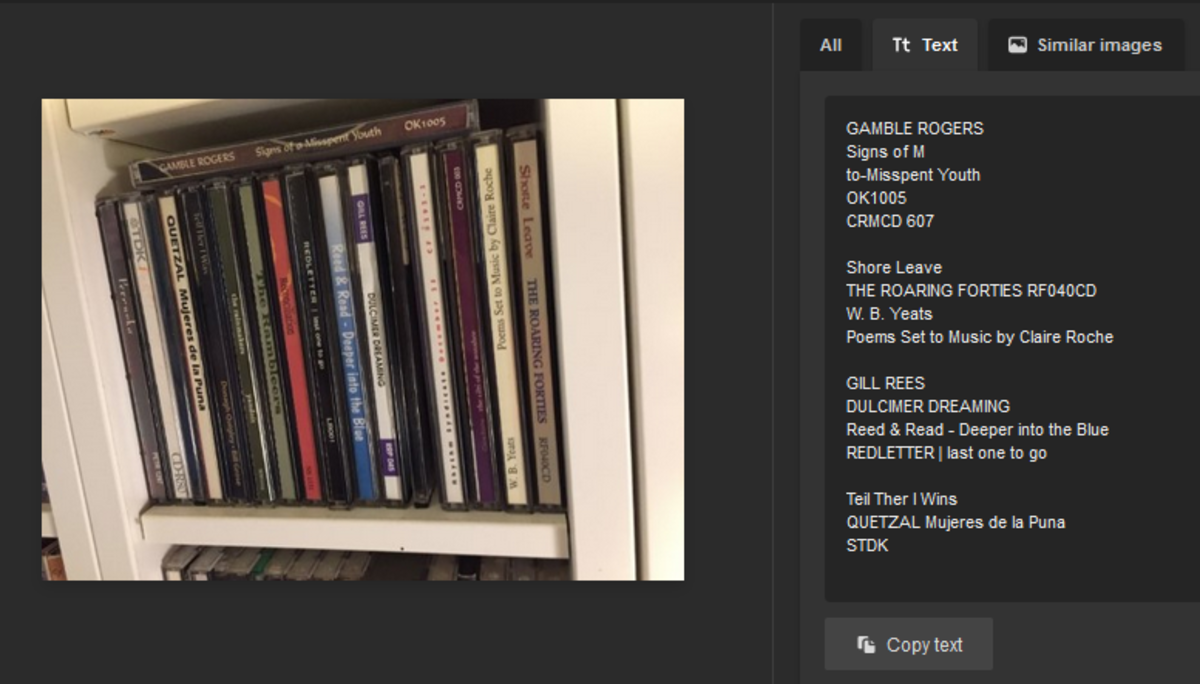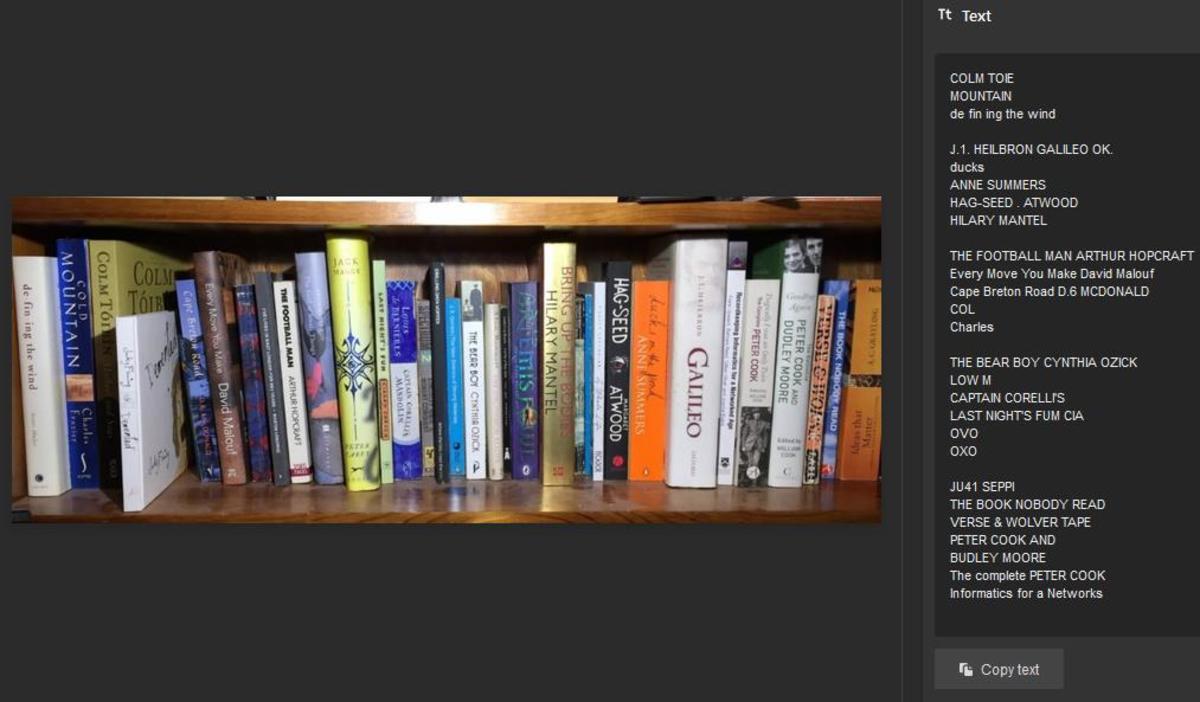Computers can help here. A photo of a shelf, or a section of a shelf, containing authored objects can be photographed digitally with a smartphone, and the title and authors of all the objects can be added as metadata of the digital image or embedded in the image itself. The metadata can then be searched with a keyword search based on a word or words appearing in the title or authors. This can locate the photograph containing the desired object and guide retrieval to the right spot. Alternatively, the list of authors and titles can be added to the photograph in a Word document, which can then be given a descriptive name like Living Room Bookshelf Beside the Door. The generation of the metadata from text appearing digital image files can be partially automated. Many image analysis facilities (such as that used in Photos, the Windows 10 media display program) can detect text appearing in images as metadata as shown below by clicking Search in Windows Photos, which attempts to find similar images using the Bing search engine. Although this extraction is not very accurate, especially for the different fonts and backgrounds appearing on the spines of CDs, DVDs, and books, it may be helpful in creating the required metadata. Automatic text extraction works better for uniform items sized items such as CDs and DVDs, but results will almost always have to be edited by hand. Where author/title is not clearly visible on the spine of the item (perhaps due to the item being very narrow, or partially occluded), typing in any part of the author or title into a search engine will usually locate the item with its full author and title easily visible if the item is a book. In Windows, metadata added to JPEG file Title and Subject fields is automatically searched when a search phrase is typed in the Windows search box. To use this facility, the author and title data needs to placed in this field. This can be done in Windows Explorer by clicking on a JPEG image file. This shows metadata fields as below. Pasting metadata strings into Title and Subject fields allows search to retrieve images which contain the search string in either field. In order to generate the metadata strings, the text shown by clicking the Search button in Photos should be selected and copied into a text editor such as Notepad++ (the Copy Text button does not work) and edited so that all of the titles and authors are shown. Any new line/carriage returns should be replaced by spaces and pasted into the Title field or Subject field as shown below. Note that text case can be upper or lower and the order of Title and Author is not significant. Once the metadata is added, searching for any string included in the metadata will display the photo of the shelf containing the item. As search only indicates that a string is present in the photo, the number of items included in the photo should not be too large.
More Precise Approaches
As Windows (and probably MacOS) automatically indexes extracted text content from Word documents, the image and text can be combined in a Word document and given a helpful name, such as Living Room Bookshelf by Door. Search can then retrieve this document, which appears as below. Another way of presenting the search results more precisely is to include Author/Title data in the image itself. The list of Author/Titles can be reviewed after the image is retrieved from search and the desired item located within the storage shown in the image. Caption Pro can add multi-line text data below an image as shown below, and it can also write the concatenated data to the Windows Subject field. Note that the total length of the text should not exceed 1024 characters if all of the text is to appear in the Subject field. Screenshot









